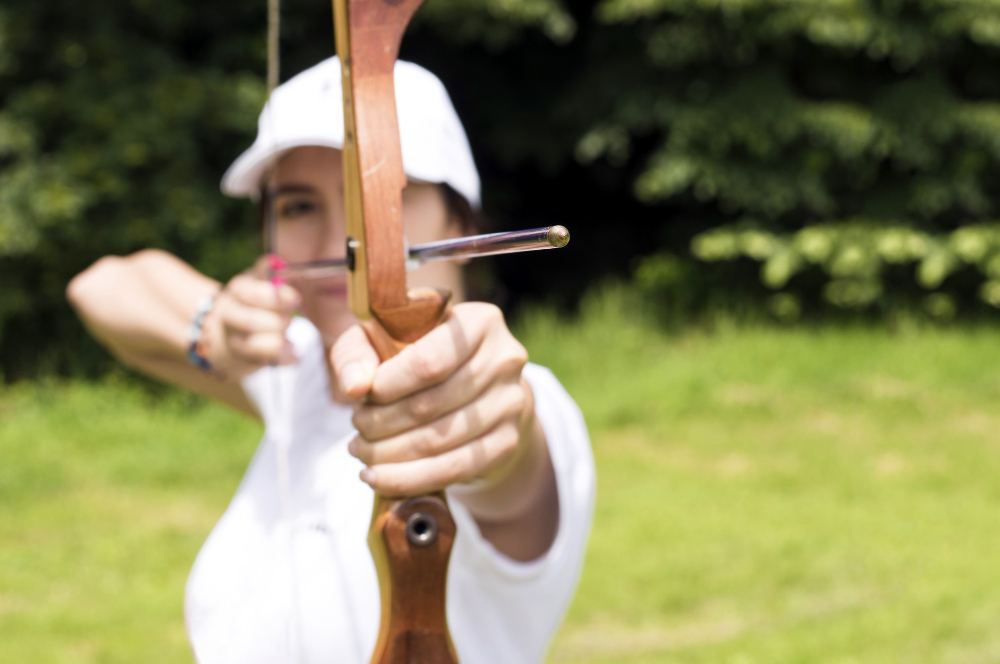Practical Guide to Get Started In Archery
We are delighted with the reception this activity has had. Every week, new groups of friends come to have fun on our fields or to ask questions. As a few months have passed, we are in a position to respond to one of the questions that we have noticed the most interest in How to start? So, we have prepared this practical guide to get started in archery if you have never had the opportunity to do so. Or if you have tried, although with little success.
 |
 |
What types of arches are there?
We can divide bows into four types: the traditional, the Olympic, the long bow and the pulley or compound bow.
The traditional bow is the smallest in size, ideal for those who have little practice. Despite being small, it can be very powerful, although since it does not have elements to improve precision, it is important to shoot carefully (the same as with the others, on the other hand).There are traditional one-piece or removable bows.
The Olympic bow is similar to the previous one, although the materials with which it is made are more advanced. It also incorporates some additional elements that can be removed in certain cases, such as an arrow rest, a telescopic sight or a precision trigger.
The longbow is, as its name suggests, longer than a traditional bow. It is quite complicated to master because the arrows make a parabola. It also has less power than these. Still, some professional archers prefer them for their elegance.
The pulley bow is a much more sophisticated weapon than other bows. It is designed to both increase shot power and improve stability and precision. It is much smaller than the others as a general rule, although the speed and precision of the shot make it the most powerful. Hunters use this bow because it has a very straight draw.
How to start
If you want to get started in archery, it is recommended that you sign up for a course. Some clubs allow you to practice archery in Barcelona and also train new archers, usually in groups.
 The duration of the basic course is a couple of days in the morning or afternoon, 10 or 12 hours in total. Prices vary depending on the club, although the ideal is to look for a course that has several instructors, and obviously, that is somewhat more expensive.
The duration of the basic course is a couple of days in the morning or afternoon, 10 or 12 hours in total. Prices vary depending on the club, although the ideal is to look for a course that has several instructors, and obviously, that is somewhat more expensive.
Before picking up the bow and arrows, because we already see you wanting to run away, there should be a theory and technique class. This teaches key points that will help you improve faster when it’s time to practice. Although not essential, some courses teach advanced details, such as lining the strings or placing feathers on arrows.
Buy a bow
If you get the bug and want to dedicate yourself to something more serious, even as a hobbyist, the normal thing is that you consider buying your bow. If so, decide on a traditional bow, not too short, detachable or one piece. The ideal is an arch of about 60 inches, more or less five feet. You will find cheap models, most made in China, made of wood or fibre with moderately acceptable quality.
If you are between several options, choose the one that seems most attractive to you. After all, this is a sport where aesthetics matter.
Being your first bow, don’t spend a fortune. The best is one that gives you good results for a season and helps you gain practice. Afterwards, you will surely want to change and improve, so you can invest what you saved in the first one.
As for power, which is also important, the courses use 20 or 30-pound bows. So start with one of these. With more power, you will only hurt yourself, at least at first.
The matter of the arrows
There are different types of arrows and, therefore, different prices. Some arrows to start can cost around 5 euros per unit. 5 or 6 units to start will be enough.
The weight, flexibility and precision will depend on several factors, such as the tip, the tube or the length. Feathers also have their importance, although not as much. Ideally, your arrows should be slightly longer than the draw you can achieve with the bow.
…